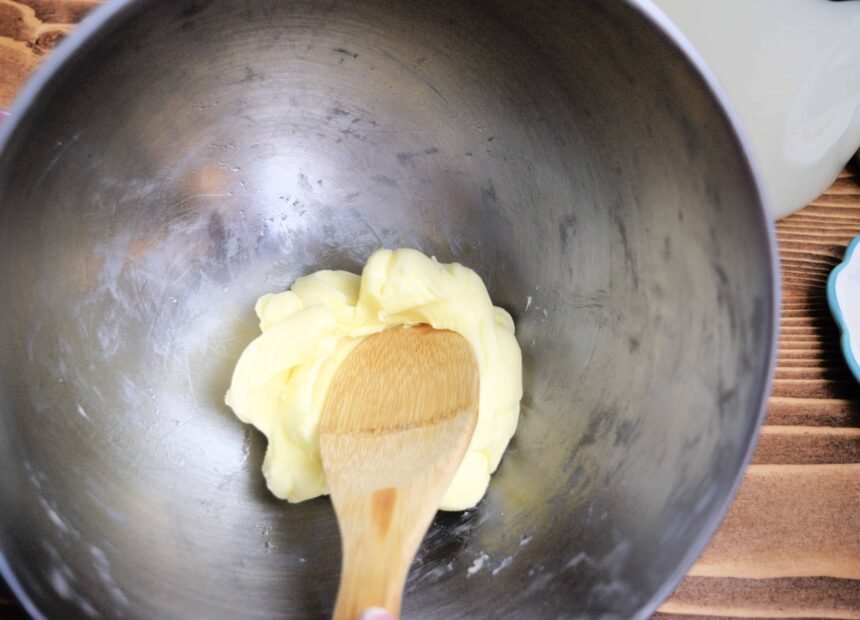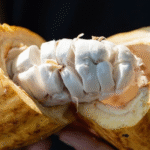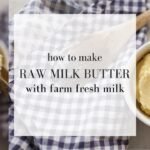Homemade butter has a special charm that store-bought options often cannot match. If you’ve ever wondered how to turn fresh raw milk into creamy, golden butter, you’re in the right place. Learning how to make butter with raw milk is not only fun but also helps you reconnect with traditional kitchen practices. Raw milk butter is rich in nutrients, boasts a superior flavor, and allows you to control every step of the process.
In this detailed guide, you’ll learn everything about raw butter making—what tools you need, how to prepare raw milk, step-by-step techniques, and even where to buy raw butter if you prefer a shortcut. By the end, you’ll be able to confidently answer common questions like how do you make butter from raw milk? and where to buy raw butter.
Why Choose Raw Milk for Butter?
Raw milk contains enzymes, beneficial bacteria, and natural creaminess that pasteurized milk often lacks. When you’re learning how to make raw milk butter, the cream from raw milk provides a deeper, fresher flavor compared to commercial dairy products.
Some benefits include:
-
Higher nutritional value thanks to unheated enzymes.
-
A richer, more authentic taste.
-
Easier digestion for some people sensitive to processed dairy.
-
The joy of making something truly homemade.
If you’re lucky enough to have access to a local dairy farm, you’ll get the freshest cream for churning butter.
Tools and Ingredients You’ll Need
To understand how to make butter from raw milk, start by gathering these items:
-
Fresh raw milk (the fresher, the better).
-
A large glass jar or bowl.
-
A refrigerator.
-
A stand mixer, hand mixer, or traditional butter churn.
-
Fine mesh strainer or cheesecloth.
-
Cold water and salt (optional).
-
Airtight container for storage.
The process might seem old-fashioned, but with modern kitchen tools, making raw butter is incredibly simple.
Step 1: Skimming the Cream
The key difference between milk and butter is cream. To make butter, you need to extract cream from raw milk.
-
Pour your raw milk into a tall glass jar.
-
Let it sit in the refrigerator for 12–24 hours.
-
You’ll see a distinct cream line form at the top.
-
Use a ladle or spoon to carefully skim off the cream.
This rich cream is what you’ll churn into butter. If you’ve been researching how to make butter with raw milk, this is the first critical step.
Step 2: Churning the Cream
This is the most exciting part—where cream transforms into butter.
-
Pour the cream into your stand mixer or churn.
-
Whip it at medium speed.
-
After several minutes, the cream thickens into whipped cream. Keep going!
-
Soon, you’ll notice the fat separating from the liquid (buttermilk).
At this stage, congratulations—you’ve successfully followed how to make raw milk butter!
Step 3: Washing and Shaping the Butter
To keep your butter fresh longer, it’s important to wash away leftover buttermilk.
-
Pour the mixture into a strainer lined with cheesecloth.
-
Rinse the butter clumps with cold water and gently knead.
-
Repeat until the water runs clear.
-
Add a pinch of salt if you like salted butter.
-
Shape the butter into a ball or block and store it in an airtight container.
This step is crucial to ensure your butter doesn’t spoil quickly.
Step 4: Saving the Buttermilk
When learning how do you make butter from raw milk, don’t overlook the bonus product: buttermilk!
This liquid left behind is tangy and full of nutrients. You can use it in baking pancakes, biscuits, or bread. It’s a wholesome bonus that comes with making your butter at home.
Common Questions About Raw Butter
1. How long does homemade raw butter last?
Properly washed and refrigerated, raw butter can last 7–14 days. Freezing extends its life to several months.
2. Can you make butter from pasteurized milk?
Yes, but the flavor and texture will differ. Raw milk butter retains a fresher taste.
3. Is making butter worth it compared to buying?
If you value flavor, nutrition, and tradition, absolutely. However, for convenience, there are options to buy.
Where to Buy Raw Butter
Not everyone has access to raw milk or the time to churn butter at home. For those who wonder where to buy raw butter, your best bet is:
-
Local farmer’s markets.
-
Organic farms.
-
Specialty health food stores.
-
Trusted online vendors.
Be sure to check local regulations, since some areas have restrictions on raw dairy sales. A helpful resource for raw butter and local providers can be found through the Real Milk initiative, a high-authority source on raw dairy.
Tips for Perfect Raw Butter
-
Start with the freshest raw milk possible. The longer milk sits, the more it loses flavor.
-
Keep everything cold during the process; warmth can cause the butter to become greasy.
-
Experiment with additions like herbs, garlic, or honey for flavored butters.
-
Use glass jars instead of plastic for better taste preservation.
Nutritional Benefits of Homemade Raw Butter
One major reason people search for how to make butter with raw milk is health benefits. Homemade butter contains:
-
Healthy fats that support brain function.
-
Vitamins A, D, E, and K in natural forms.
-
Conjugated Linoleic Acid (CLA), linked to immune health.
-
Beneficial bacteria from raw cream.
When made properly, raw butter is a nutrient-rich alternative to industrial spreads.
Cultural Uses of Raw Butter
Across the world, butter has been a staple for centuries. In India, clarified butter (ghee) has spiritual and culinary significance. In Europe, raw cultured butters are prized in French pastries. Learning how to make butter with raw milk connects you to these rich traditions, making your kitchen a place of history as well as flavor.
Read More: How Do You Make Butter from Raw Milk? Beginner’s Answer
Final Thoughts
Now you know exactly how to make butter from raw milk, from skimming cream to churning, washing, and storing it. The process may take time, but it’s incredibly rewarding. You also know where to buy raw butter if making it at home isn’t an option.
Making your own butter is more than just a recipe—it’s a way of reconnecting with natural food traditions, enjoying nutrient-rich homemade dairy, and savoring flavors that no store-bought butter can match.









